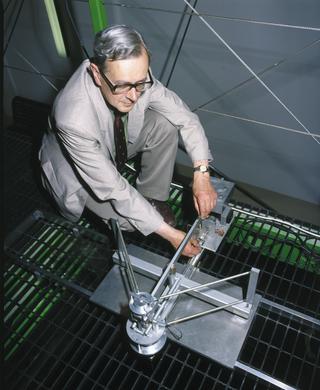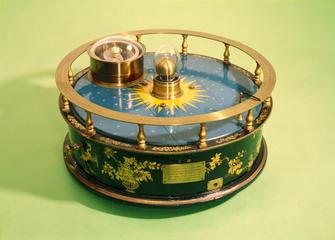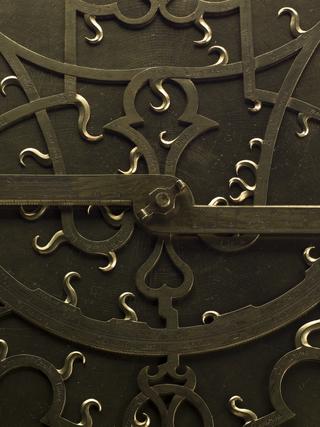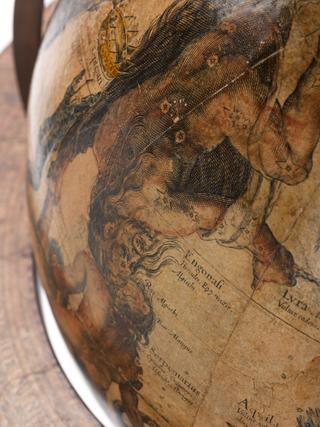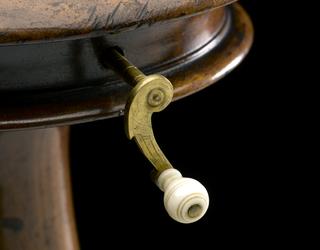
Double-frame brass sextant.

Anodized brass sextant, double-frame bridge (18 straight-bars) type, with polished brass limb, wooden handle and threaded hole for stand, in mahogany keystone shaped fitted case, by Charles Augustus Schmalcalder, 82 Strand, City of Westminster, London, England 1810-1826. Consists of inlaid 123° silver scale (-5° to 140°) with 10' divisions, silver vernier scale (10") two sets of filter shades (4 & 3, red & green) and reading magnifier with reflector on a swivel arm (65mm). Fitted with threaded telescope bracket with collimation correction for two telescopes, 90mm and 176mm (erect & inverted image) and extra draw tube (47mm). Case contains repair label for Henry Porter, 181 Strand, London, dated April 1885. Case and sextant marked, ‘Da 18 [and] H O [broad anchor] 18’, the property sign of the Hydrographic Office of the British Admiralty (adopted in Feb.1828, D indicates sextant)
Dated to the early nineteenth century, this brass sextant was made by the London instrument maker, Charles Schmalcalder. With its tripod stand and telescopic sights, it was designed for use in navigation, surveying and hydrography. The sextant could be used to find your latitude by measuring the height of the midday Sun or a suitable star at night. Longitude could also be found from determining local noon from the maximum height of the Sun and comparing that time with a chronometer set to a fixed meridian. The angle between the fixed stars and the Moon could also be used to find longitude after lengthy calculations using tables in the Nautical Almanac.
